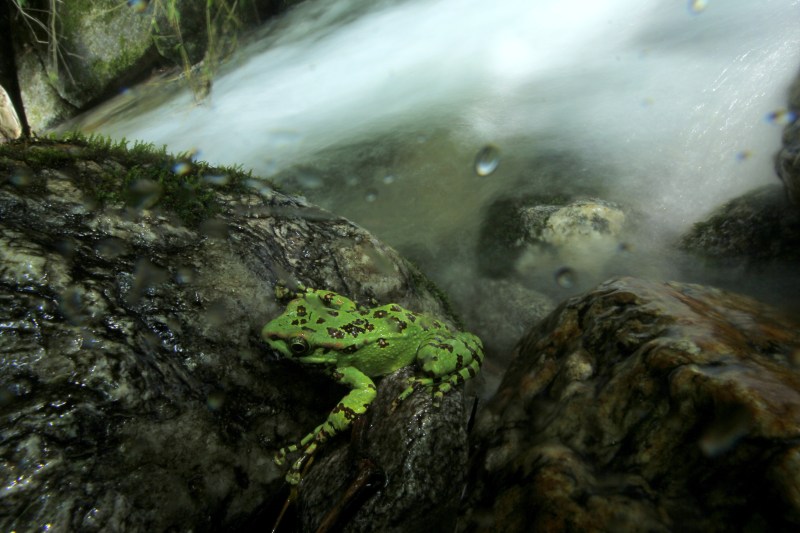
Photo by Winai Suthanthangjai
Guest blog post by Henrik Bringsøe
Our observations on the quite small-bodied Asian kukri snakes in Thailand have documented a feeding behaviour which differs from anything ever described in snakes.
Normally, snakes would swallow their prey whole. However, this particular species: the Small-banded Kukri Snake (Oligodon fasciolatus), would instead use its enlarged posterior maxillary teeth to cut open the abdomen of large poisonous toads, then inserts its entire head into the cavity to pull out and eat the organs one by one, while the prey is still alive!
During those macabre attacks, we managed to capture on camera three times, the toads struggled vigorously to escape and avoid being eviscerated alive, but, on all occasions, this was in vain. The fights we saw lasted for up to a few hours, depending on the organs the snake would pull out first.
The toads observed belong to the quite common species called Asian Black-spotted Toad (Duttaphrynus melanostictus), which is known to secrete a potent toxin from their prominent parotid glands, located on the neck and all over the back. Could it be that the snakes have adopted this sophisticated and gory approach to avoid being poisoned?
In a fourth, and equally important, case, an adult kukri snake attacked a somewhat smaller individual of the same toad species. However, this time, the snake swallowed the entire toad. Why did the snake swallow the juvenile toad, we still don’t know. Perhaps smaller toads are less toxic than adults? Or, could it be that kukri snakes are indeed resistant to the Asian Black-spotted toad’s poison, yet the large size of the adult toads prevented the snakes from swallowing them in the three afore-mentioned cases?

(Phitsanulok, Thailand, 5 June 2020).
Photo by Kanjana Nimnuam
At present, we cannot answer any of these questions, but we will continue to observe and report on these fascinating snakes in the hope that we will uncover further interesting aspects of their biology.
Perhaps you’d be pleased to know that kukri snakes are, thankfully, harmless to humans. However, I wouldn’t recommend being bitten by one of those. The thing is that they can inflict large wounds that bleed for hours, because of the anticoagulant agent these snakes inject into the victim’s bloodstream. Their teeth are designed to inflict lacerations rather than punctures, so your finger would feel as if cut apart! This secretion, produced by two glands, called Duvernoy’s glands and located behind the eyes of the snakes, are likely beneficial while the snakes spend hours extracting toad organs.

(Loei, Thailand, 9 August 2016).
Photo by Winai Suthanthangjai
***
Publication:
Bringsøe H, Suthanthangjai M, Suthanthangjai W, Nimnuam K (2020) Eviscerated alive: Novel and macabre feeding strategy in Oligodon fasciolatus (Günther, 1864) eating organs of Duttaphrynus melanostictus (Schneider, 1799) in Thailand. Herpetozoa 33: 157-163. https://doi.org/10.3897/herpetozoa.33.e57096




